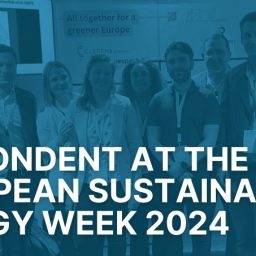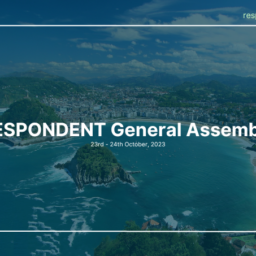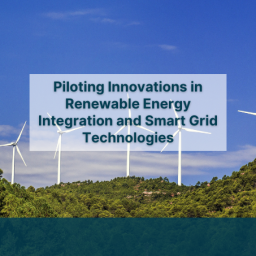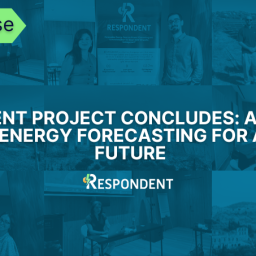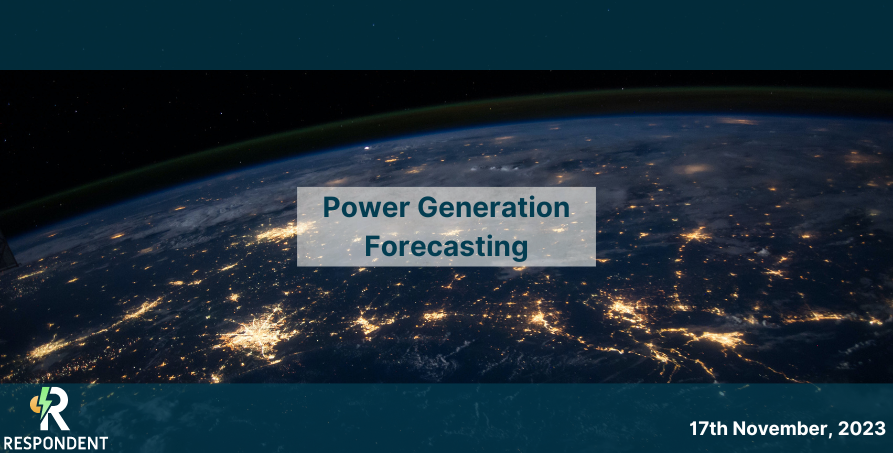
RESPONDENT introduces an innovative approach to power generation forecasting that leverages historical data, weather analysis, and advanced mathematical models to accurately predict renewable energy output, crucial for grid stability and increasing reliance on sustainable energy sources.
WHAT IS POWER GENERATION FORECASTING?
Power generation forecasting concerns the ability to accurately forecast how much electricity will be generated by renewable energy sources (RES) within a relatively specific timeframe, often ranging from a few hours to up to several days in advance.
When used effectively, power generation forecasting can help to ensure a reliable and efficient supply of electricity, as it facilitates observation of how much output a particular energy source will generate. A higher degree of certainty surrounding RES output, in turn, naturally supports the further integration of RES into existing power grids. To have this higher rate of certainty is critical, as intermittent sources of energy, due to their weather-dependency, are often viewed with reluctance and apprehension.
Within the context of RESPONDENT, the source of energy that will be analysed and measured is solar, one of the most commonly used RES.
HOW DOES POWER GENERATION FORECASTING WORK?
If you wanted to know how much energy one of these sources would produce a day or two in advance, how does power generation forecasting help to achieve this aim? What methods of calculation, observation, and integration does it exploit?
In short, how do power generation forecasts work?
Through a combination of historical data, analysis of weather conditions, and mathematical models, power generation forecasting is able to predict the amount of power that will be generated by RES, as outlined and explained below:
- Historical Data: The process of power generation forecasting begins with the analysis of historical data. By evaluating past power generation patterns and the associated data of similar times of years, season, day, and weather conditions, valuable insights can be garnered concerning how the power outputs of different renewable energy sources vary based on a myriad of factors.
- Weather conditions: Understandably, the weather plays a crucial role in terms of renewable energy sources and their successful application. By analysing specific aspects of weather forecasts, including solar radiation, wind speed, temperature, and cloud cover, forecasters can discern how weather patterns affect different sources of renewable energy and their dependability for the future.
- Mathematical models: Mathematical models are exploited by forecasters to merge historical data, current weather conditions and predictions, and other interrelated factors for an estimation of RES power generation. These advanced, complex models correlate the available data of individual variables in order to develop the most accurate possible forecasts and increase confidence in their use as a viable energy alternative.
HOW DOES EFFECTIVE POWER GENERATION FORECASTING HELP INCREASE THE USE OF RENEWABLE ENERGY SOURCES?
Due to their irregular nature, RES often have a reputation as being unreliable sources of energy, thus increasing scepticism about their widespread adoption and the continued reliance on fossil fuels that are harming our planet. However, when monitored and considered appropriately using power generation forecasting, the challenges of their intermittency can be addressed and assuaged, leading to a greater increase in their uptake, safer and inexpensive sources of energy, and employed as a key component in the fight against climate change.
One major area of concern in relation to RES is their integration into existing power grids. If the output of RES is viewed as uncertain, grid operators will naturally be apprehensive to further integrate them into their power grids . This means that increasing the accuracy of power generation forecasting will be crucial in convincing them of the merits of RES as a viable energy alternative.
Power generation forecasting can help to provide important insights into the expected output of RES such as wind, solar, and hydropower, which will naturally lead to an increasing level of confidence as they are further integrated into electricity grids. Power generation forecasting can help to achieve this aim by enabling operators to anticipate variations in renewable energy output and therefore plan, adjust, or readjust accordingly.
Other areas of concern for the increased use of RES as alternative energy sources are investment and resource planning. When it comes to these considerations, policymakers and utilities will want to ensure that sound investment decisions are made and resource allocation is properly accounted for.
Increasing the accuracy of power generation forecasting, a solution that is integral to the work of the RESPONDENT project, will help to alleviate fears surrounding investment in RES that has often plagued advancements in the sector to date. With the benefits that increased accuracy in power generation forecasting has to offer, investors can better measure the expected performance and revenue generation of renewable energy products, leading to a greater level of capital investment and diminishing the overall costs of financing such projects.
Looking then to resource allocation, power generation forecasting can assist investors, developers, and policymakers to predict the anticipated output of RES and alleviate their concerns of unreliability when attempting to embrace them on a larger scale. In doing so, resources such as equipment, land, and infrastructure can be allocated appropriately, safeguarding against inefficient management, waste, and prohibitive costs for cutting-edge renewable energy ventures and programs.
WHAT DIFFERENTIATES RESPONDENT’S POWER GENERATION FORECASTING FROM EXISTING METHODS?
While RESPONDENT will employ the conventional components of power generation forecasting in its own solution, there are a number of factors which make the RESPONDENT proposal for power generation forecasting unique in comparison to existing methods.
Utilisation of the EU’s Copernicus Earth Observation Programme offers our project advanced capabilities to accurately estimate local weather and climate parameters. As discussed in one of our previous blog posts, data gathered from Copernicus will be combined with in-situ weather data from Future Intelligence’s (FINT) deployed Internet of Things (IoT) weather stations, which will then be fed into artificial intelligence/machine-learning (AI/ML) algorithmic models to provide accurate, reliable power generation forecasting models.
Of course, power generation forecasting based on weather parameters and mathematical/AI models is not a novel concept. There currently exists a wealth of products and applications that exploit global weather data in tandem with advanced mathematical/AI models and site-specific measurements for accurate forecasts.
Where RESPONDENT differs, however, is in a number of innovative ways.
Firstly, the project will take advantage of weather-related data from the Copernicus constellation and the European Centre for Medium-Range Weather Forecasts (ECMWF) with the aim of exploiting the capabilities and offerings of the European EO programme. Secondly, RESPONDENT aims to produce a solution that is independent from non-European technologies, services, and data that matches the desire of the EU to increase its own autonomy in space-related domains of influence.
Finally, RESPONDENT will employ the already commercially available IoT-based weather stations that have been developed by FINT to enhance the project’s weather forecasting accuracy, providing site-specific data for the variable RES installations.
Compared to existing solutions in the market today, RESPONDENT’s proposed power generation forecasting model is expected to result in an estimated 8-12% higher range of accuracy. Although these numbers may seem marginal at first glance, it is important to remember that every degree of accuracy counts when it comes to predicting the output of energy sources as variable as RES.
The accuracy of RESPONDENT’s proposed power generation forecast also comes with low-cost investment. This is due to the project’s exploitation of freely available Copernicus EO data and services, in conjunction with FINT’s economical proprietary IoT weather stations. In the midst of an energy crisis and uncertainty surrounding the constant fluctuation of energy prices, low-cost alternatives to traditional energy sources are a welcomed reprieve.
As we have discussed, power generation forecasting plays a vital role when it comes to increasing and integration renewable energy sources into our modern energy systems, which is of particular importance to the RESPONDENT project as a strong focus of our work and end results. By allowing for more accurate predictions, power generation forecasting can enable utilities, grid operators, and policymakers to make informed decisions, enhance grid stability, lower costs, and contribute to a more sustainable and efficient energy landscape that is powered by sources of renewable energy.









